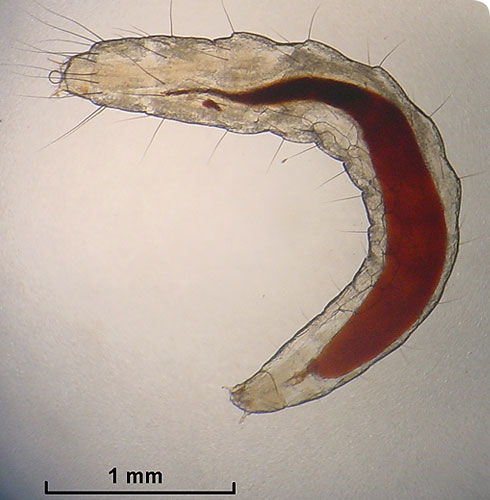Taxonomy
The plague flea Xenopsylla cheopis belongs in the family Pulicidae. This family also includes the human, cat, dog and rabbit flea. Fleas from the genus Xenopsylla are mainly associated with mammals, particularly rodents.
Fleas, which belong to the insect order Siphonaptera, are small (1–8mm long), wingless insects usually heavily sclerotised or ‘armoured’ and shiny. Most have bristles and spines, and many have distinctive backward-pointing comb-like structures that enable the flea to latch on to the fur, hair or feathers of its host. This adaptation prevents the flea becoming detached during grooming or preening.
They vary in colour from pale yellow to almost black and are distinguished from other parasitic groups by their ability to jump and by being laterally flattened.
They have piercing/sucking mouthparts and 2 pairs of well-developed palps.
The eyes are often rudimentary. Instead the flea uses sensory pits and short, 3-segmented antennae to detect a host. The antennae lie in deep grooves just above and behind the eye to protect them when the flea is moving through the fur or feathers of its host.
They have six relatively long legs with 5-segmented tarsi and prehensile claws.
The larvae are leg-less, eye-less and elongate with strong bristles and biting mouthparts.
The pupae, which are free-living, are contained within a cocoon.
Toolbox
Glossary
Palps
Elongated appendage near mouth used for feeling, eating and movement.
Prehensile
Adapted for grasping.
Tarsi
A section of the leg, usually segmented.
